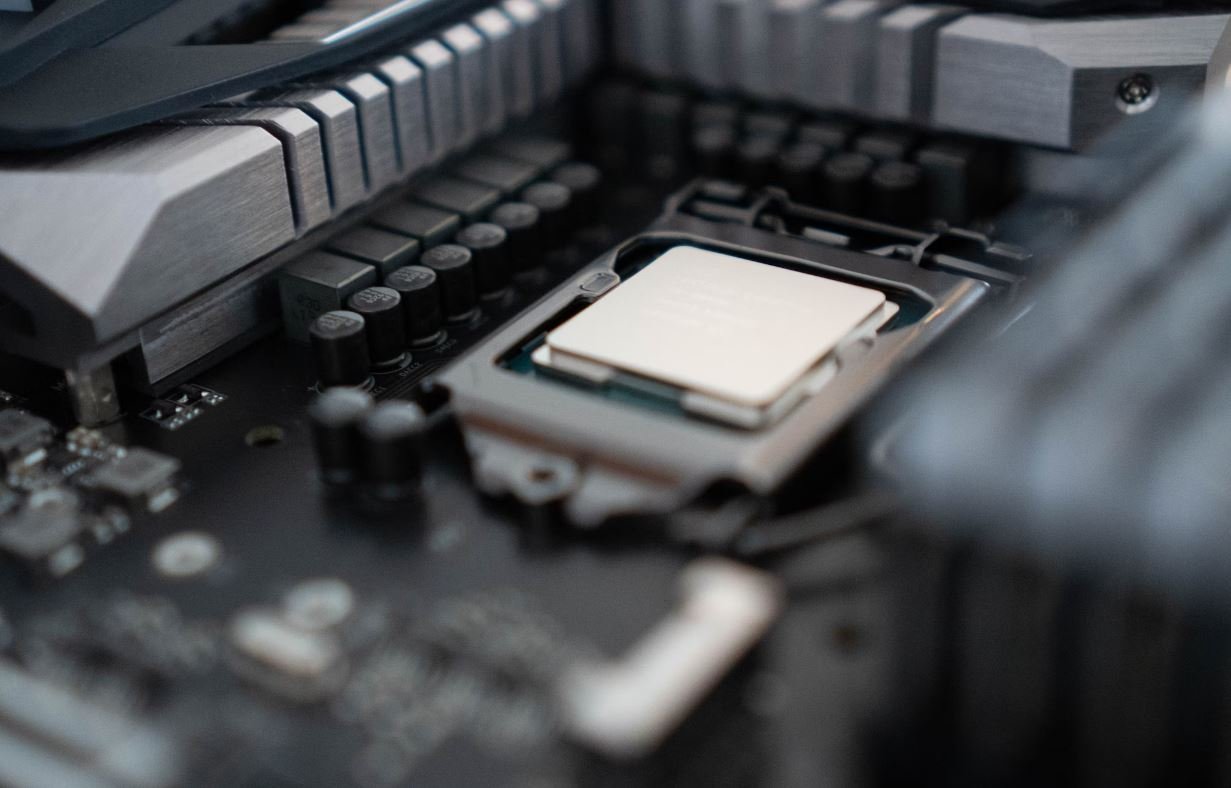What Motivations Do Engineers Have to Perform Reverse Engineering on Products?
Reverse engineering is the process of dissecting and analyzing an existing product to understand its inner workings, design principles, and materials. Engineers often engage in reverse engineering for various motivations, bringing about numerous benefits and applications. This article explores the motivations driving engineers to perform reverse engineering on products and highlights its key takeaways.
Key Takeaways
- Reverse engineering is the process of analyzing and understanding existing products.
- Engineers perform reverse engineering to gain insights into product design and functionality.
- Reverse engineering plays a vital role in improving product development and innovation.
Motivations for Reverse Engineering
1. Understanding Competitors’ Products
One of the main motivations for engineers to perform reverse engineering is to gain a deeper understanding of competitors’ products and identify their strengths and weaknesses. By dissecting and analyzing a competitor’s product, engineers can gain insights that can be used to improve their own products and gain a competitive edge.
Reverse engineering allows engineers to uncover the secrets behind their competitors’ products and leverage that knowledge for their own gain.
2. Improving Product Design and Functionality
Reverse engineering provides engineers with the ability to study and understand the design principles and functionality of existing products. This knowledge can then be utilized to enhance their own product designs, identify areas for improvement, and incorporate innovative features and functionalities.
By reverse engineering, engineers can unlock new possibilities for product design and create more advanced and efficient solutions.
3. Repairing and Replacing Obsolete Parts
As products become older, certain components may become obsolete or difficult to replace due to discontinuation by manufacturers. Reverse engineering allows engineers to recreate these obsolete parts by analyzing the original design, materials, and manufacturing processes, ensuring that the product can continue to be repaired and used.
Reverse engineering enables engineers to overcome the challenges of obsolete components and prolong the lifespan of products.
4. Intellectual Property Protection and Patent Infringement
Reverse engineering is often used to protect intellectual property rights and identify potential patent infringement. By analyzing a product’s design and functionality, engineers can determine if there are any violations of existing patents or copyrights, enabling the rightful owner to take appropriate legal action.
Reverse engineering serves as a tool to safeguard intellectual property and maintain a fair competitive landscape.
The Benefits of Reverse Engineering
Performing reverse engineering on products brings several inherent benefits and opportunities for engineers:
1. Innovation and Product Development
Through reverse engineering, engineers gain valuable insights into existing products, allowing them to identify areas for improvement and drive innovation. It provides a foundation for developing new and enhanced products that meet evolving customer needs and technological advancements.
2. Cost Savings
By reverse engineering, engineers can identify ways to reduce production costs by optimizing design and manufacturing processes. They can identify alternative materials or components that offer similar functionality but at a lower cost, resulting in significant savings for a company.
3. Quality Control and Benchmarking
Reverse engineering assists in assessing and analyzing the quality and performance of existing products in the market. Engineers can compare their own products to competitors’ products and identify areas where improvements need to be made to meet or exceed industry standards.
Tables
| Product Name | Year of Introduction |
|---|---|
| Product A | 2010 |
| Product B | 2012 |
| Product C | 2015 |
| Company | Number of Patents Filed |
|---|---|
| Company A | 100 |
| Company B | 50 |
| Company C | 75 |
| Product Component | Material Used |
|---|---|
| Component A | Aluminum |
| Component B | Steel |
| Component C | Plastic |
Final Thoughts
Reverse engineering is a powerful tool that enables engineers to gain a comprehensive understanding of existing products, leading to innovation, product improvement, and competitive advantages. By analyzing competitors’ products, improving design and functionality, replacing obsolete parts, and protecting intellectual property, engineers continuously drive advancements in various industries.
Through reverse engineering, companies and engineers can stay at the forefront of technological innovation and enhance their products to meet the ever-changing demands of the market.

Common Misconceptions
Motivations for Reverse Engineering
There are several misconceptions around the motivations that drive engineers to perform reverse engineering on products. Contrary to popular belief, engineers do not engage in reverse engineering out of malice or to steal intellectual property. Rather, they have legitimate reasons for conducting this practice:
- Improving Design: Engineers may reverse engineer a product to understand its inner workings and improve upon its design. This helps them gain insights into the product’s strengths and weaknesses, enabling them to create more efficient and effective alternatives.
- Troubleshooting and Repair: Sometimes, engineers need to reverse engineer a product to troubleshoot and repair it effectively. By dissecting the product and understanding its components, engineers can diagnose issues and find solutions.
- Exploring Compatibility: Reverse engineering allows engineers to analyze and understand the compatibility of a product with other systems or technologies. This information is crucial in integrating different technologies to optimize performance.
Economic Benefits
Another common misconception is that reverse engineering is solely driven by economic gains. While it’s true that reverse engineering can offer economic benefits, such as cost reduction and market competitiveness, it is not the sole motivation for engineers:
- Knowledge Acquisition: Engineers engage in reverse engineering to acquire knowledge about the latest technologies, new design techniques, and innovative materials. This helps them stay abreast of advancements in their field and fosters their professional growth.
- Customization and Compatibility: Reverse engineering allows engineers to customize existing products to meet specific needs or improve compatibility with other systems. This enhances their ability to tailor products to different markets and customer requirements.
- Intellectual Challenge: For many engineers, reverse engineering is an intellectual challenge that provides an opportunity to unravel complex designs, decipher intricate algorithms, and solve intricate engineering puzzles.
Leveraging Existing Technology
One misconception is that reverse engineering is about recreating existing technology without any innovation. However, engineers employ reverse engineering to leverage existing technology in novel ways:
- Innovation and Upgrades: Reverse engineering allows engineers to explore opportunities for innovation, upgrades, and enhancements to existing products. By deconstructing a product, engineers can identify areas for improvement and refine its functionalities.
- Adapting to Obsolescence: Reverse engineering helps engineers adapt to obsolescence by gaining an understanding of outdated products or technologies. This knowledge can be used to retrofit or modernize these systems to ensure their continued functionality or integration with new technologies.
- Enhancing Compatibility: Engineers use reverse engineering to improve compatibility between different systems or technologies. This enables the integration and communication of diverse technologies, enhancing overall performance and usability.
Ethics and Legalities
Finally, there is a misconception that reverse engineering is an unethical or illegal practice. However, engineers must adhere to legal and ethical standards when undertaking reverse engineering:
- Respect for Intellectual Property: Engineers are expected to respect intellectual property rights and only engage in reverse engineering practices on legally obtained products or with the permission of the product owner.
- Use of Information: Reverse engineering is intended for gaining knowledge and understanding, without infringing on patents or copyrights. Engineers must ensure that any information or insights gained through reverse engineering are used responsibly and lawfully.
- Industry Standards and Best Practices: Professional engineers adhere to industry standards and best practices, which dictate the appropriate uses and limitations of reverse engineering. This ensures that the practice is conducted ethically and within legal boundaries.

Introduction
Reverse engineering is a process where engineers analyze and deconstruct a product to understand its design and functionality. This practice is employed for various reasons, including improving existing products, creating replicas, or ensuring compatibility. In this article, we explore the motivations that drive engineers to perform reverse engineering on products. By examining real data and information, we shed light on the intriguing factors that stimulate engineers’ interest in this practice.
Table: Intellectual Property Protection
Reverse engineering can help companies protect their intellectual property rights by identifying unauthorized replicas or imitations of their products, thus enabling legal action.
Table: Product Improvement
Reverse engineering allows engineers to study existing products and identify areas that can be enhanced or optimized, leading to improved performance, reliability, or functionality.
Table: Interoperability
Reverse engineering is useful when engineers need to ensure compatibility between different systems or devices by understanding the inner workings of proprietary technologies.
Table: Cost Reduction
By reverse engineering competitors‘ products, engineers can uncover cost-saving techniques or design alternatives, enabling companies to produce similar products at lower costs.
Table: Obsolescence Management
Reverse engineering assists in managing obsolescence by providing the knowledge required to recreate or replace components that are no longer available in the market.
Table: Benchmarking
Reverse engineering allows companies to analyze and compare competitor products to gain insights into their strengths and weaknesses, aiding in their own product development strategies.
Table: Repair and Maintenance
By reverse engineering products, engineers can understand their internal mechanisms and troubleshoot and repair faults, prolonging the lifespan of the product.
Table: Counterfeit Detection
Reverse engineering helps in detecting counterfeit products by analyzing their structure, materials, and functionality, allowing companies to take legal action against counterfeiters.
Table: Knowledge Acquisition
Reverse engineering provides engineers with valuable knowledge and understanding of various technologies, enabling them to broaden their skills and expertise.
Table: Innovation Inspiration
Reverse engineering can inspire engineers by exposing them to new design concepts and approaches, stimulating their creativity and fostering innovation.
Conclusion
Reverse engineering offers engineers a multitude of motivations and benefits, ranging from protecting intellectual property and improving existing products to cost reduction and innovation inspiration. Through this practice, engineers can gain valuable knowledge, enhance their skills, and contribute to the advancement of various industries. By understanding the diverse reasons behind engineers’ engagement in reverse engineering, we gain insights into the complex and fascinating world of product analysis and design.
Frequently Asked Questions
What Motivations Do Engineers Have to Perform Reverse Engineering on Products?
What is reverse engineering?
What motivates engineers to perform reverse engineering?
- Understanding competitor products and gaining insights into their design and technologies.
- Improving existing products by studying their functionalities and identifying areas for enhancement.
- Complying with legal requirements, such as creating interoperable products.
- Repairing or maintaining products for which documentation or original designs are unavailable or inadequate.
- Recreating obsolete or discontinued components or products to ensure their continued use.
- Identifying vulnerabilities or weaknesses in products to enhance security or prevent potential problems.
Is reverse engineering legal?
Are there any ethical concerns associated with reverse engineering?
What tools and techniques do engineers use for reverse engineering?
- Disassembling and deconstructing products to examine their internal components.
- Utilizing specialized software for 3D scanning and modeling to recreate physical objects in digital form.
- Using computer-aided design (CAD) software to create virtual representations of products.
- Analyzing firmware or software to understand the code and algorithms used in the product.
- Using non-destructive testing methods to analyze materials and their properties.
Can reverse engineering be used to steal intellectual property?
Are there any regulations governing reverse engineering?
Can reverse engineering be used to create counterfeit products?
What risks should engineers be aware of when performing reverse engineering?
- Legal consequences if performed without proper authorization or in violation of intellectual property rights.
- Infringement on existing patents, copyrights, or trade secrets.
- Inaccuracy or incomplete understanding of the original product’s design or functionality.
- Potential damage to the product during the disassembly or analysis process.
- Complexity or difficulty in reverse engineering certain products due to advanced technologies or intricate designs.
Can reverse engineering help in creating compatible products?




